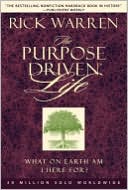A recent Newsweek poll reports that 76 percent of Americans believe in heaven. Yet even avid believers have difficulty conjuring up more than vague images of halos, harps, and wispy angels in flowing robes. Anthony DeStefano knew there had to be a more complete, meaningful, and comforting vision of what heaven is like, and A Travel Guide to Heaven is the entertaining and enlightening result.
Using the Bible as his guide, the author notes that heaven is not only a spiritual place, but also a physical place, a fabulous “luxury resort” more sumptuous than any on Earth. The residents are real, their bodies transformed into their most perfect selves—physically, emotionally, and spiritually. By making a spiritual subject immensely physical, the book provides a picture of amazing places to visit, things to do, luxuries for pampering—not to mention deep, abiding joy.
Combining the clarity and logic of C. S. Lewis with a terrific sense of fun and adventure, DeStefano creates a brilliant, reassuring portrait of heaven, a place that has intrigued and puzzled humankind throughout history. With its clear view of the afterlife, A Travel Guide to Heaven might best be compared to James Van Praagh”s Talking to Heaven or Betty J. Eadie”s Embraced by the Light in its tremendous message of comfort and reassurance.
Publishers Weekly
Forget angels playing harps. In this fascinating, comforting book, DeStefano takes the reader on a tour of heaven, painting it as a dynamic place of unlimited joy, and using Scripture and dramatic imagination to fill in details about the afterlife. God doesn”t throw away the good things he creates, he writes, an idea which is the basis of many of his speculations about heaven. Heaven is a tangible place, believes DeStefano, and at least part of it will be a transformed new earth. People will have their own recognizable bodies, only perfected. DeStefano tackles tough questions about heaven, including the role of angels, the measurement of time, marriages and whether pets will be there (Of course!). Fears of boredom are dispelled with his depictions of possible activities (How about a tour of the Andromeda galaxy?) and creative work (Books will be written and read, public structures will be built and utilized). However, he writes that nothing will compare with the thrill of meeting God, the source of true happiness. DeStefano persuasively argues that the idea of heaven is a positive force on earth, since faith in God and heaven makes you more interested in what you do in this life-not less. He is neither an academic nor a professional theologian, which gives the book its delightfully conversational tone and frees him to conjecture without restraint. Many readers will find DeStefano”s solid Christian framework reassuring and his exciting picture of heaven compelling. (Sept. 16) Forecast: One remarkable element of DeStefano”s work is its theological similarity to Elizabeth Stuart Phelps”s active, growth-oriented, neighborly vision of heaven in The Gates Ajar (1868) and Beyond the Gates (1885). Doubleday is surely hoping that this encouraging title will enjoy similarly celestial sales: Phelps”s books sold more than 100,000 copies in the U.S. alone, a remarkable feat for the times. Copyright 2003 Reed Business Information.












Reviews
There are no reviews yet.